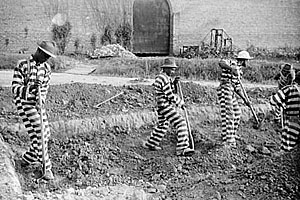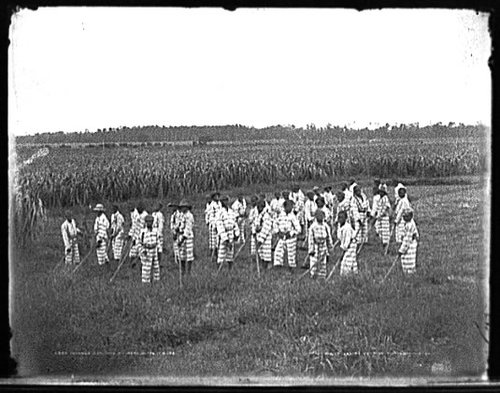Picturing Modernity: Race, Labor, and Landscape Production in the Old South
“In this study, I examine three conditions – a landscape ideal, a labor ideal, and the public display of public work – in an effort to reveal the social and spatial practices enabling the persistence of chain gang labor in Georgia even as the South took on a vigorous program of modernization. While the prevalence of convict labor in Georgia has typically been attributed to the structural racism of the penal system and to the individual racism of politicians, I am more specifically interested in understanding the particular ways in which such racial ideals were enacted through landscape and labor. In my reading, landscape was more than simply the place where racial subordination was enacted; rather, landscape provided the very means through which the racialization of labor was constructed. The image of chained laborers toiling in the Georgia landscape visually asserted a cultural ideology rooted in agrarian ideals and racialized constructions of the working body. Thus, two conflicting positions – the pre-modern reference of the chained laborer in the landscape as a slave versus versus the drive for a modern and industrialized southern economy – served as the basis for a struggle both local and national over the image of the South in the twentieth century.”
- “Picturing Modernity: Race, Labor, and Landscape Production in the Old South,” Landscript 5, edited by Jane Hutton (Berlin: Jovis Verlag, 2017).

